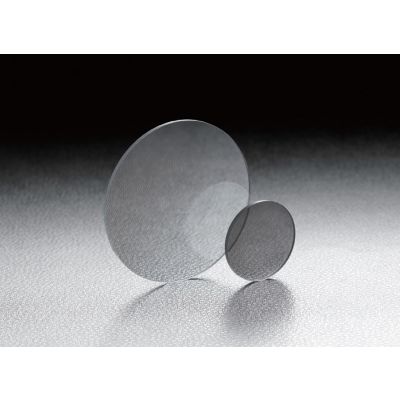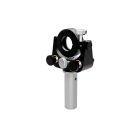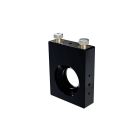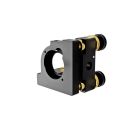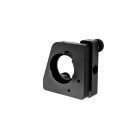Polka dot beam spliter 25.4mm Diameter 70:30
PDBS70-25.4C1.5
The polka dot beamsplitter is a beamsplitter that has aluminum coating of halftone dots (polka dots) on the glass substrate. It has a low dependence on the incident angle and can be used in a wide range of wavelengths from ultraviolet region to the infrared region.
◦Reflectance to transmittance ratio is manufactured by adjusting the area ratio of the points that have been coated.
◦Unlike dielectric beamsplitters, the polka dot beamsplitter reflectance and transmittance ratio does not change as the incident angle changes.
◦There are two sizes available φ25.4mm and φ50.8mm diameter and three types of reflectance to transmittance ratio, 7:3, 5:5 and 3:7.
◦Unlike dielectric beamsplitters, the polka dot beamsplitter reflectance and transmittance ratio does not change as the incident angle changes.
◦There are two sizes available φ25.4mm and φ50.8mm diameter and three types of reflectance to transmittance ratio, 7:3, 5:5 and 3:7.
| Name | Polka dot beam spliter 25.4mm Diameter 70:30 |
|---|---|
| Weight | 0.0050kgs |
| Standard Coatings Available | No |
| Guide |
|
| Remark | - |
| Attention |
|
| Design wavelength | 250 - 2200nm |
| Diameter φD | 25.4mm |
| Image Label | Polka dot beam spliter 25.4mm Diameter 70:30 |
| Reflectance : Transmittance | 70:30 |
| Material | Synthetic fused silica |
| Parallelism | <3′ |
| Coating |
Front Surface: Al+MgF2 Rear Surface: Uncoated |
| Recommended angle of incidence | 0 − 45° |
| Wavelength range | 250 − 2200nm |
| Surface Quality (Scratch-Dig) | 80-50 |
| Dot pitch | 0.3mm |
| Reflectance : Transmittance | 70:30 |
| Diameter φD | φ25.4mm |
| Thickness t | 1.5mm |
| Transmission<br> (Wevelength Range 555nm , <br>Angle of Incidence : 0°) | 30%(+0/-5%) |
In stock
SKU
PDBS70-25.4C1.5
£159.47
The polka dot beamsplitter is a beamsplitter that has aluminum coating of halftone dots (polka dots) on the glass substrate. It has a low dependence on the incident angle and can be used in a wide range of wavelengths from ultraviolet region to the infrared region.



